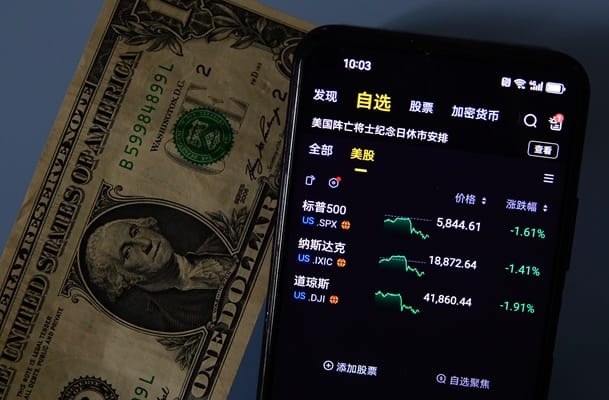Amid the fluctuation of the U.S. Dollar Index and its consolidation within the narrow range of 97.50 to 97.75, markets remain in a state of heightened anticipation over the Federal Reserve’s upcoming decisions and the implications of the ongoing government shutdown in Washington.
The index’s rebound from its intraday lows during the Asian session does not reflect genuine strength, but rather a temporary attempt to withstand mounting pressures from economic and political factors.
In my view, this consolidation resembles a “waiting phase” before the next clear direction is defined, which makes caution the prevailing theme for now.
The latest U.S. private-sector jobs report revealed an unprecedented sharp decline not seen since 2023, with a loss of 32,000 jobs in September, coupled with a downward revision of August’s figures.
This underscores the fragility of the labour market. Such data leaves the Fed with little room for patience, pushing it further toward monetary easing, with two additional rate cuts this year now appearing almost inevitable.
With labour market weakness in focus, any recovery in the dollar will remain fragile and temporary, as confidence in the economy is the key factor in sustaining the currency’s strength.
The industrial sector has also failed to provide meaningful support for the dollar. Despite a slight improvement in the Purchasing Managers’ Index, the indicator remains stuck in contraction territory for the seventh consecutive month. This persistent weakness places further strain on the overall economy and erodes the dollar’s appeal as a haven. In my assessment, these signals confirm that the dollar lacks sustainable upward drivers in the near term and remains vulnerable to selling pressure whenever fresh data reaffirms economic slowdown.
The government shutdown only exacerbates the situation. The political deadlock and failure to pass a spending plan highlight the depth of division, leading to the suspension of vital economic data releases such as the Nonfarm Payrolls report, leaving markets in a fog of uncertainty. The absence of such data means investors must rely heavily on Federal Reserve officials’ statements to guide decisions, making the dollar increasingly sensitive to rhetoric and political stances. In my view, this factor is no less dangerous than the economic weakness itself, as it strips the market of its primary reference point during a critical period.
In the short term, I believe the dollar lacks sufficient momentum to sustainably break above the 98.00 level, with the most likely scenario being continued sideways trading with a bearish bias as long as the index remains below this barrier. A break below 97.20 would be a firm signal of further weakness, potentially opening the path toward 96.60. On the other hand, a swift political breakthrough that ends the shutdown could trigger a limited rebound, but this would not alter the broader trend unless accompanied by stronger economic data—something unlikely in the near term.
At its core, the U.S. government shutdown represents a crisis of confidence more than a purely financial one. The halting of federal agencies disrupts the publication of critical economic indicators, such as jobs and inflation data, which investors rely on to gauge the economy’s trajectory. This disruption creates an information vacuum, leaving markets more vulnerable to rumours and political rhetoric, thus compounding pressure on the dollar.
Moreover, a prolonged shutdown directly detracts from economic growth as certain government activities stall and spending is delayed, translating into slower GDP expansion and weaker consumer and investor confidence. In my opinion, this combination of political uncertainty and economic pressure leaves the dollar vulnerable to further declines, especially if accompanied by the Fed’s shift toward greater monetary easing. The longer-term impact, however, will depend on the duration of the shutdown and how swiftly federal operations are restored.
In conclusion, the dollar today stands at a critical crossroads: economic pressures pushing for additional rate cuts, a government shutdown threatening to disrupt data flow and erode confidence, and only faint attempts to cling to key support levels. From my perspective, betting on a strong rally in the dollar during Q4 2025 carries more risks than opportunities, and any temporary strength should be treated as a selling opportunity rather than a prelude to a sustainable upward trend.





Leave a Comment